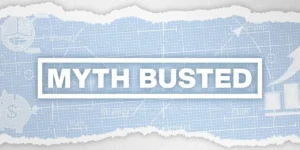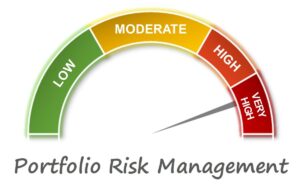It can be scary to start spending, especially if you’re not used to working with money. Putting your hard-earned money out into the market can be both exciting and scary. But saving is one of the best ways to get rich in the long run. Even people who have never invested before can create a plan that works for them and their money if they understand what they’re doing and proceed with caution. Understanding the basics of spending is the first step to making smart choices and avoiding common mistakes in starting your investment journey.
Understand the Importance of Investing Early
The power of compound interest is one of the most important concepts in investing. When you put money into investments, it has the potential to return to you. After you earn that return, you can earn even more from it, and so on. This process is called compound interest. When you start saving early, your money has more time to grow. Even small amounts can add up over the years. That’s why many financial experts recommend starting to invest as soon as possible, even if you can only invest a small amount at first.
Set Clear Financial Goals
Before you start spending, you need to be clear about your financial goals. Think about why you are spending. Are you saving for retirement, a house, or your children’s education? Your investment plan should include your goals and how long you think it will take to achieve them. For short-term goals, you may need safer investments that are easier to abandon. If you have long-term goals, you can try more options because you have more time to recover from market changes. Clarifying your goals will help you stay on track and choose the best investment options.
Build a Solid Financial Foundation
Make sure you have enough savings before you start spending. This means having a steady income, spending wisely, and saving for emergencies. If you have a reserve fund equal to three to six months of living expenses, you won’t have to sell your investments if the economy takes a turn for the worse. Also, before you spend, try to pay off high-interest debts, such as credit card debt. Once you have enough money to cover your basic needs, you can invest more safely and confidently.
Understand Risk Tolerance
Everyone is different when it comes to risk. Some people can handle drastic market changes, while others prefer to maintain the status quo. The factors you should consider depend on how much risk you are willing to take. Younger investors can generally tolerate more risk because they have more time to recover from a loss. Older investors approaching retirement age may want safer, more reliable investments. Knowing how much risk you are willing to take can help you develop a strategy that works even in volatile markets.
Add Diversification to Your Portfolio
Diversification is one of the best ways to keep your business portfolio risk-free. By spreading your investments across different asset classes, companies, and regions, you can minimize the effects of poor performance from a single investment. Diversification reduces the chance of losing a lot of money and increases the chance of achieving consistent returns over the long term. To diversify your risk, you can buy mutual funds or exchange-traded funds (ETFs), which cover a wide range of assets. As you gain experience, your portfolio will better match your preferences and goals.
How to Choose the Best Investment Account
You can put your money into several different types of accounts, each with its own rules and benefits. Some common choices include investment accounts, individual retirement accounts (IRAs), 401(k) retirement accounts, and school savings accounts. Depending on the type of account, retirement accounts often offer tax advantages, such as tax-free growth or tax-free withdrawals. Regular stock accounts can give you more freedom, but they don’t help you save a lot of money on taxes. To maximize your investments and pay the least amount of tax, it’s important to understand the rules and benefits of each type of account.
Start Small and Stick With It
You don’t have to spend a lot of money. There are many websites that will help you start investing with as little as $10 or $20. Investing should become a habit as soon as possible. Regular deposits, even small amounts, can lead to tremendous growth over time. You invest a certain amount of money at a fixed time. This method is sometimes called dollar-cost averaging. This method can reduce the impact of market fluctuations and save you the trouble of trying to time the market, which is difficult even for experienced investors.
Continuing Your Financial Education
You don’t invest once; you invest over and over again. The world of money is changing rapidly, and staying informed can help you make smarter choices. You can read books, listen to podcasts, follow reliable financial news sources, and even consider taking online courses. Understanding market trends, economic indicators, and wealth management strategies can help you understand and prepare for new situations. More information can also make you more comfortable with new investment opportunities.
Conclusion
Starting to invest may seem difficult at first, but it can be easy and rewarding if you have the right mindset and are prepared. By setting clear financial goals, building a solid foundation, learning about different types of investments, and using modern tools, you can build wealth gradually. Don’t give up, be patient, and keep learning. Remember: saving takes time, and the sooner you start, the greater your chance of success. Take control of your financial future today and make your money work for you.
FAQs
1. Can you lose money in the stock market?
Yes, the stocks you buy can go down or up in value. But in the long run, the stock market generally offers good returns, especially if your portfolio is diversified.
2. How often should I check my stocks?
You don’t need to check your financial situation every day. Usually, checking your portfolio every three months or whenever your financial situation changes is sufficient.
3. When should you start investing?
The earlier, the better. Due to the power of compound interest, even people in their early 20s can earn high returns if they start early.
4. Should I invest my money in individual stocks or mutual funds?
If you’re just starting out, funds like ETFs and mutual funds are usually safer and easier to manage because they have built-in diversification features.
5. What happens if I invest my money in the stock market and it crashes?
It’s normal for the market to go down for a while. If you’re buying for the long term, it’s usually better to leave your money in the market until the value drops.




